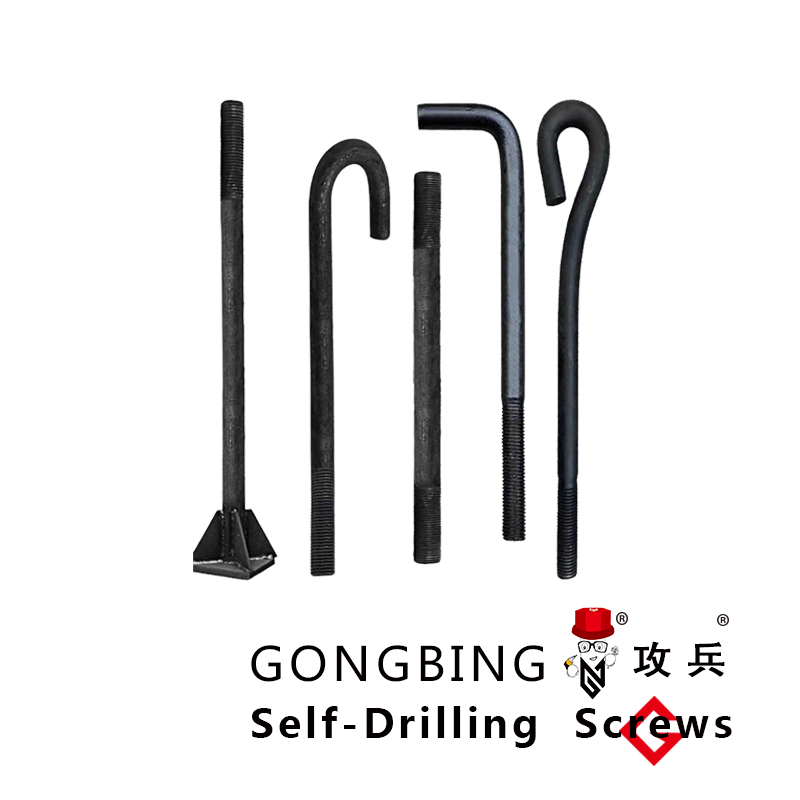concrete footing anchor bolts
Understanding Concrete Footing and Anchor Bolts
Concrete footings are an essential component of any structural foundation. They provide stability and support to buildings and other structures by distributing weight across a larger area of soil. One critical aspect of anchoring a structure to its footing involves the use of anchor bolts. These bolts are integral for securing the superstructure to the foundation and ensuring the overall integrity of the structure through various environmental and load conditions.
What Are Concrete Footings?
Concrete footings are designed to transfer loads from a structure to the soil beneath. They are typically made from reinforced concrete, which adds tensile strength and stability. Footings are generally wider than the walls or columns they support, which helps to prevent settling or shifting. The size and depth of footings are dictated by several factors, including the type of soil, load-bearing requirements, local building codes, and climatic conditions in the area.
When designing concrete footings, engineers consider various factors such as the weight of the structure, potential lateral forces from wind or seismic activity, and the characteristics of the soil. Proper footing design ensures that the structure remains level and stable over time, reducing the risk of cracks or structural failure.
The Role of Anchor Bolts
Anchor bolts play a crucial role in connecting structural steel or wooden components to concrete footings. These bolts are embedded in the concrete while it is still wet, allowing for a secure bond once the concrete cures. Anchor bolts come in various sizes and shapes, including L-shaped, J-shaped, and straight threads, each designed for specific applications.
The primary purpose of anchor bolts is to resist shear and tension forces. Shear forces occur when lateral loads attempt to slide the structure sideways, while tension forces pull the structure upward. Without adequately designed anchor bolts, a structure could experience significant lateral movement, leading to potential failures, especially during extreme weather events or seismic activity.
Types of Anchor Bolts
concrete footing anchor bolts

There are two main types of anchor bolts cast-in-place and post-installed. Cast-in-place anchor bolts are placed in the concrete before it sets. They are often used in new constructions and can be positioned accurately to meet design specifications.
Post-installed anchor bolts, on the other hand, are inserted into hardened concrete. This type of anchor is used in renovations or when existing structures require additional support. Post-installed systems often utilize epoxy or other bonding agents to secure the bolt within the hole drilled into the concrete.
Furthermore, the selection of the right type of anchor bolt depends on various factors, including load requirements, environmental conditions, and connection details. For instance, areas prone to seismic activity may require more robust anchor systems to withstand dynamic loads.
Installation and Best Practices
The installation of anchor bolts requires adherence to strict engineering standards and best practices. Proper alignment and placement are critical to ensure the effectiveness of the anchoring system. Before pouring concrete, it is essential to verify that anchor bolts are positioned correctly according to the structural design.
Additionally, using the appropriate materials for anchor bolts is vital. Common materials include carbon steel and stainless steel, with coatings applied to enhance corrosion resistance. For structures exposed to harsh environmental conditions, such as marine settings, using galvanized or stainless options is advisable.
Furthermore, regular inspections should be conducted to ensure that the anchor points remain secure and free from corrosion or damage over time. Maintenance is essential for preserving structural integrity and safety.
Conclusion
Incorporating anchor bolts within concrete footings is a critical element in the construction of stable and enduring structures. Proper design, selection, and installation of both the footings and the anchor bolts will significantly affect the performance and longevity of a building. As construction technologies continue to evolve, understanding the fundamental roles of these components remains essential for engineers and builders alike. In any construction project, the safety of occupants and the durability of the structure should always be the top priority.
-
Weatherproof Plastic Expansion Anchors for OutdoorNewsJun.06,2025
-
Sustainability in the Supply Chain: Eco-Friendly TEK Screws ProductionNewsJun.06,2025
-
Load-Bearing Capacity of External Insulation FixingsNewsJun.06,2025
-
Double Head Bolts: Enhancing Efficiency in Industrial MachineryNewsJun.06,2025
-
Corrosion Resistance in Chipboard Screws: Coatings for Wholesale DurabilityNewsJun.06,2025
-
Butterfly Toggle Bolts : Enhancing Structural ResilienceNewsJun.06,2025
